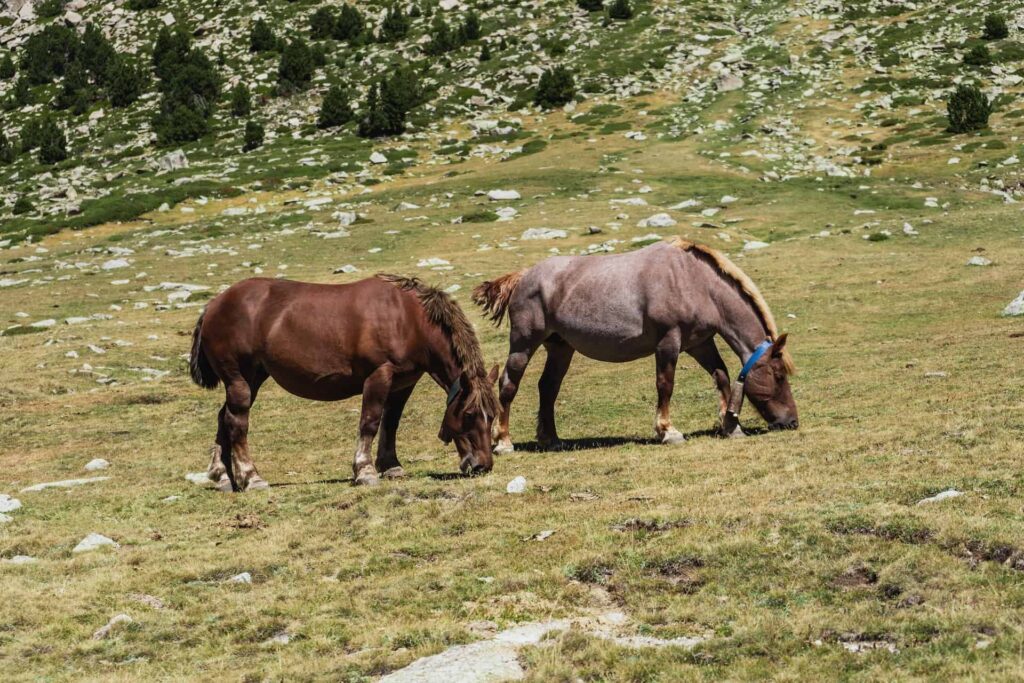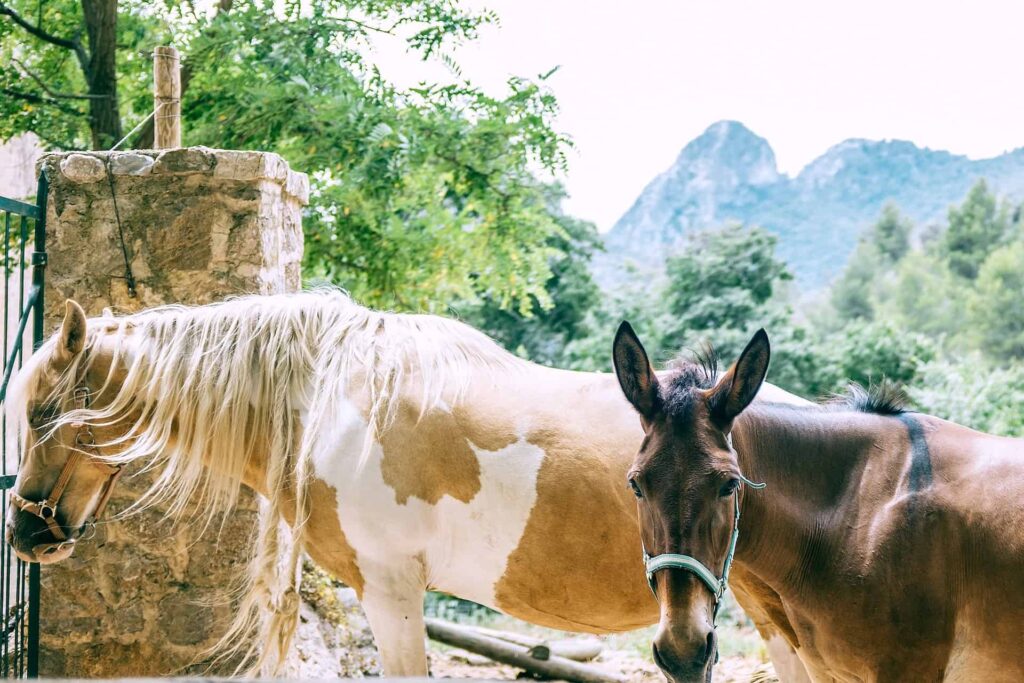Breeding horses can be a challenging but rewarding experience for horse owners. It requires a lot of preparation and knowledge to ensure successful breeding. In this article, we will discuss the basics of how to breed horses, including choosing the right mares and stallions, breeding methods, pregnancy and foaling, post-birth care, and potential challenges.
Understanding the basics of horse breeding is important before embarking on the process. Horse owners should be aware of the costs involved, such as fees for the stallion and insurance costs. They should also be familiar with the three main breeding methods: pasture mating, hand mating, and artificial insemination. Breed registry regulations may vary regarding the use of artificial insemination.
Choosing the right mares and stallions is crucial for successful breeding. Horse owners should consider factors such as the horse’s age, health, and temperament. They should also research the horse’s bloodlines and performance records to ensure they are a good match. By following these basic guidelines, horse owners can increase their chances of breeding healthy and successful foals.
Key Takeaways
- Preparation and knowledge are key to successful horse breeding.
- Horse owners should be familiar with breeding basics, including costs and methods.
- Choosing the right mares and stallions is crucial for successful breeding.
Basics of Horse Breeding
Understanding Equine Genetics
Equine genetics play a crucial role in horse breeding. A deep understanding of the heritable traits, such as coat color, conformation, and performance abilities, helps breeders make informed decisions when selecting stallions and mares. It is vital to have a strong grasp of horse breeding principles, including pedigree evaluation and genetic testing, to maximize the chances of producing healthy and successful offspring.
Certain genetic disorders can impact a horse’s health and performance, so it is essential to identify carriers before breeding. Modern DNA testing can detect potential problems, such as inherited diseases or undesirable traits, ensuring breeders make knowledgeable choices for their breeding programs.
Roles of Stallions and Mares
Stallions and mares each have specific duties in horse breeding. The stallion’s primary role is to pass on desirable traits and performance capabilities to their offspring. Traits such as speed, stamina, and elegance contribute to the overall quality of the foals produced.
In turn, mares are responsible for carrying and nurturing the foals during pregnancy. Some mares are known for being “broodmares,” producing high-quality offspring consistently. Mares should have good conformation, temperament, and performance abilities, ensuring they pass on these characteristics to the next generation.
Selecting the appropriate stallion and mare for reproduction is a critical part of horse breeding. Breeders need to consider factors like lineage, temperament, conformation, and overall health of the horses to ensure the best possible outcome. By paying careful attention to these factors, breeders increase the likelihood of producing successful offspring.
Process of Horse Mounting
Pre-Mounting Rituals
Before the actual mounting process, it’s essential to prepare both the stallion and the mare for breeding. Proper preparation ensures a safe and successful breeding experience.
- Physical examination: Conduct a thorough physical examination of both the stallion and mare to ensure they are healthy and fit for breeding. This includes checking for signs of disease or lameness.
- Grooming and cleanliness: Clean both horses thoroughly, paying close attention to their genital areas. This helps prevent the spread of infection and keeps the horses comfortable.
- Mare’s estrus cycle monitoring: Keep track of the mare’s estrus cycle, as well-timed breeding increases the chances of conception. Mares typically show signs of receptivity during their heat cycle (around every 21 days).
- Secure environment: Make sure the breeding area is quiet, secure, and free from distractions. This minimizes risks, reduces stress, and ensures proper mounting.
Actual Mounting Process
The actual mounting process involves the following steps:
- Introduce the horses: Start by slowly introducing the mare and stallion to one another to gauge their reactions. Careful observation is key to prevent injury or aggressive behaviors.
- Tease and check mare’s receptivity: A teaser horse, usually a gelding, can be used to test the mare’s receptivity. If the mare willingly accepts the teaser, she is ready for the stallion.
- Secure the mare: Secure the mare with a halter and lead rope, allowing her enough room to move and show submission, but preventing any sudden or dangerous movements.
- Introduce the stallion: Slowly approach the mare with the stallion, keeping a safe distance. As the stallion becomes more interested, allow him to approach the mare, but maintain control with a lead rope.
Once the stallion is ready to mount and the mare is submissive, the actual mounting takes place. A handler should be present during this process to ensure both horses’ safety. After the stallion dismounts, keep the horses separated to minimize any risks of injury. Remember to monitor the mare for any signs of pregnancy or complications after the breeding process.
Post-Mounting Care and Management
Post-Mount Care for Stallions
After a stallion has been used for breeding, it is important to provide proper care to ensure his health and well-being. This may include:
- Cooling down: Walk the stallion to help reduce his heart rate and dissipate body heat.
- Grooming: Brush the stallion to remove any dirt, sweat, or debris that may have accumulated during the breeding process.
- Inspecting for injuries: Check for any cuts, scrapes, or swelling that may have occurred during mounting. Address any issues immediately.
- Proper nutrition: Ensure the stallion receives a balanced diet to maintain optimal health and performance.
Post-Mount Care for Mares
Caring for mares after breeding is crucial for their health and the success of the pregnancy. Some aspects of post-mount care for mares include:
- Monitoring for discharge: Observe the mare for any unusual discharge, which could be a sign of infection or other complications.
- Progesterone levels: Monitor the mare’s progesterone levels to ensure they remain at an optimal level for pregnancy maintenance.
- Ultrasound examination: Schedule an ultrasound examination with a veterinarian to confirm the mare’s pregnancy and monitor its progress.
Foal Management
Once the foal has been born, proper care and management are essential for its development and growth. Key aspects of foal management include:
- Initial health check: A veterinarian should conduct a thorough examination of the foal soon after birth to identify any potential health issues.
- Feeding: Foals should begin nursing from the mare shortly after birth, and they may require supplemental milk if the mare is unable to produce sufficient milk.
- Deworming and vaccination: Foals should be dewormed and vaccinated according to a recommended schedule to protect against common equine diseases.
- Socialization: Expose the foal to various sights, sounds, and experiences to promote confidence and healthy interactions with humans and other horses.
Common Horse Breeding Challenges
Infertility Issues
One common challenge in horse breeding is infertility issues. Infertility can be caused by various factors, such as age, genetic problems, and poor nutrition. Age-related decline in fertility is common in both mares and stallions, as their reproductive abilities decrease with age. Genetic abnormalities can also contribute to infertility, as chromosomal defects can cause miscarriages or developmental issues in the foal.
A balanced diet is essential for optimal reproductive performance. Malnourishment or obesity can negatively impact fertility, as can mineral imbalances. Ensuring that horses have the proper nutrition can greatly improve their ability to breed successfully.
Health Concerns
Health concerns are another major challenge in horse breeding. Various health issues can affect the success of breeding, such as reproductive tract infections, hormonal imbalances, and chronic diseases. Mares may experience infections of the uterus, which can lead to fertility problems and an increased risk of miscarriage. Ensuring a healthy reproductive tract is essential for successful breeding.
Hormonal imbalances can affect both mares and stallions. They may experience low libido or irregular estrus cycles, making it difficult to breed on a reliable schedule. Chronic diseases, such as equine herpesvirus, can cause long-lasting health issues and can be transmitted to the offspring or other horses. Preventative care and regular veterinary checkups are essential in minimizing health risks in any breeding program.
Behavioral Problems
Behavioral issues can pose significant challenges to horse breeding. Difficulties may arise when horses exhibit undesired behaviors, such as aggression or anxiety. Uncooperative behavior from either the mare or stallion can disrupt successful mating.
Training and socialization are important factors in addressing these problems. Proper training can help mitigate aggressive tendencies and improve comfort levels during the breeding process. Socialization can help horses become more comfortable with others, reducing anxiety and potential aggression during mating. Additionally, a calm and controlled environment is crucial to minimizing stress for both horses involved in the breeding process.
Frequently Asked Questions
How is a horse breeding mount designed?
A horse breeding mount is designed to provide a safe and controlled environment for stallions and mares during the mating process. It typically consists of a sturdy frame that supports a padded or cushioned area that the stallion mounts, closely mimicking a mare’s back. Breeding mounts may also include an adjustable height mechanism and safety features such as straps, buckles, or ropes to help control the stallion’s movement and positioning.
What materials are used for making a horse breeding mount?
Horse breeding mounts can be made from various materials, depending on the durability and comfort required. Common materials include steel or aluminum for the frame and high-density foam, rubber, or vinyl for the cushioned surface. The materials chosen may also depend on the cost and required maintenance, with some mounts using a combination of materials for an optimal balance between comfort, safety, and longevity.
How can one build a DIY horse breeding mount?
Building a DIY horse breeding mount requires careful planning and knowledge of horse behavior. Start with a sturdy frame, usually made from steel or wood, and consider adjustable height mechanisms for different sized stallions. Attach a cushioned surface on top of the frame, ensuring it is both comfortable and easy to clean. Incorporate safety features such as straps and stabilizing mechanisms to control the stallion’s movement. Always consult with experienced breeders or professionals for guidance and make sure to prioritize the safety of both horses during the mating process.
What are the advantages of using a breeding mount?
Using a breeding mount offers several advantages over traditional live cover breeding. It helps to reduce the risk of injury to both the stallion and mare by providing a controlled environment and minimizing unnecessary movements. The breeding mount minimizes the effort and stress on the stallion, allowing it to focus on the mating process. Additionally, the breeding mount can be cleaned and sanitized between uses, reducing the risk of disease transmission between horses.
What safety precautions should be considered during live cover breeding?
During live cover breeding, several safety precautions should be followed to minimize the risk of injury or harm to both horses and handlers. These include ensuring that both horses are healthy, restraining the mare to prevent her from kicking the stallion, employing experienced handlers to assist throughout the process, and monitoring the horses for signs of distress or aggression during the mating process. It’s essential to always prioritize the welfare of both horses and have contingency plans in case of issues or complications during breeding.
What’s the role of a breeding mount in stallion and mare mating?
In stallion and mare mating, the breeding mount plays a crucial role in ensuring a safe and controlled environment for both animals. It mimics the back of a mare, allowing the stallion to mount and perform the mating process without exerting unnecessary effort or risking injury. The breeding mount helps to reduce stress and physical strain on the stallion, enabling a more efficient and safe mating process.
Last Updated on August 27, 2023 by Nate Dewsbury



